Visit Library for MBP Pro eBooks |
Today, I’ve selected ten images from the last three days of my 2024 Complete Namibia Tour, all from the Etosha National Park. Etosha is a very special African National Park in that, for most of the year, it isn’t a lush green oasis for the wildlife. It’s an excellent representation of Namibia as a country, as it’s mostly arid, dry land, and the animals have all adapted to harsh conditions. This has become ever more so over the last few years as Namibia continues to be in the grip of a drought that doesn’t look set to ease up soon.
We start today with a photo from the Okaukuejo water hole, at which a herd of zebra seems to pay their respects to an approaching elephant. A strange dynamic always comes into play when an elephant arrives at a waterhole, with many animals sitting back, waiting to see how good the elephant’s mood is before they venture back to the water to drink. Some animals will stay away entirely until the elephant leaves again.
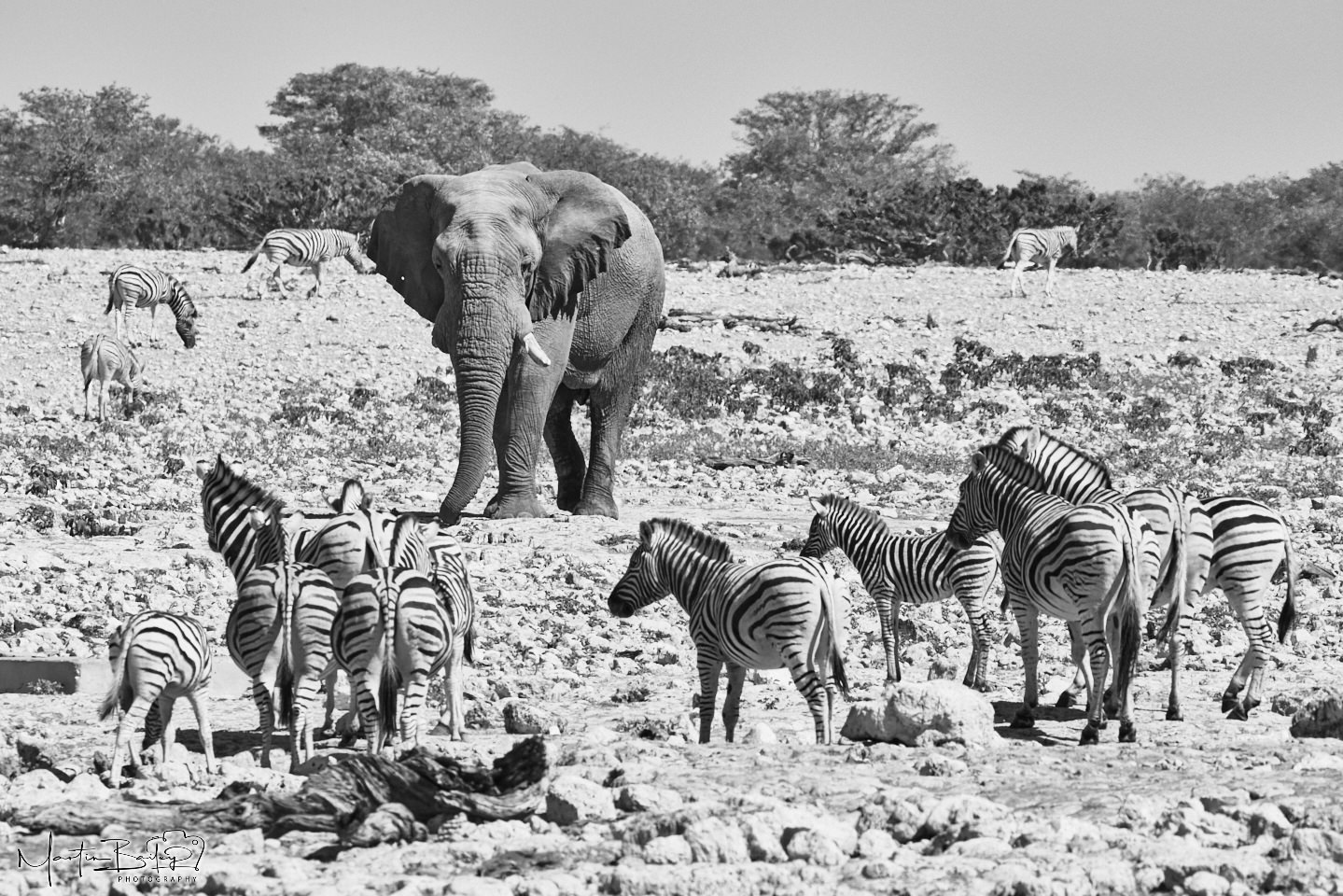
Speaking of moods, it was hard to tell if this pair of zebra were friends or foes. The one at the back in this shot continued to chase the other around for a few minutes, and a couple of times, that hoof caught the jaw of the pursuing zebra and bent its face out of shape for a moment, but it didn’t dampen the spirit of the chaser. I chose this shot over the facial blow shot because it sums up the interaction much better, with the chasing zebra almost looking like it’s smiling as the other tries to kick it.
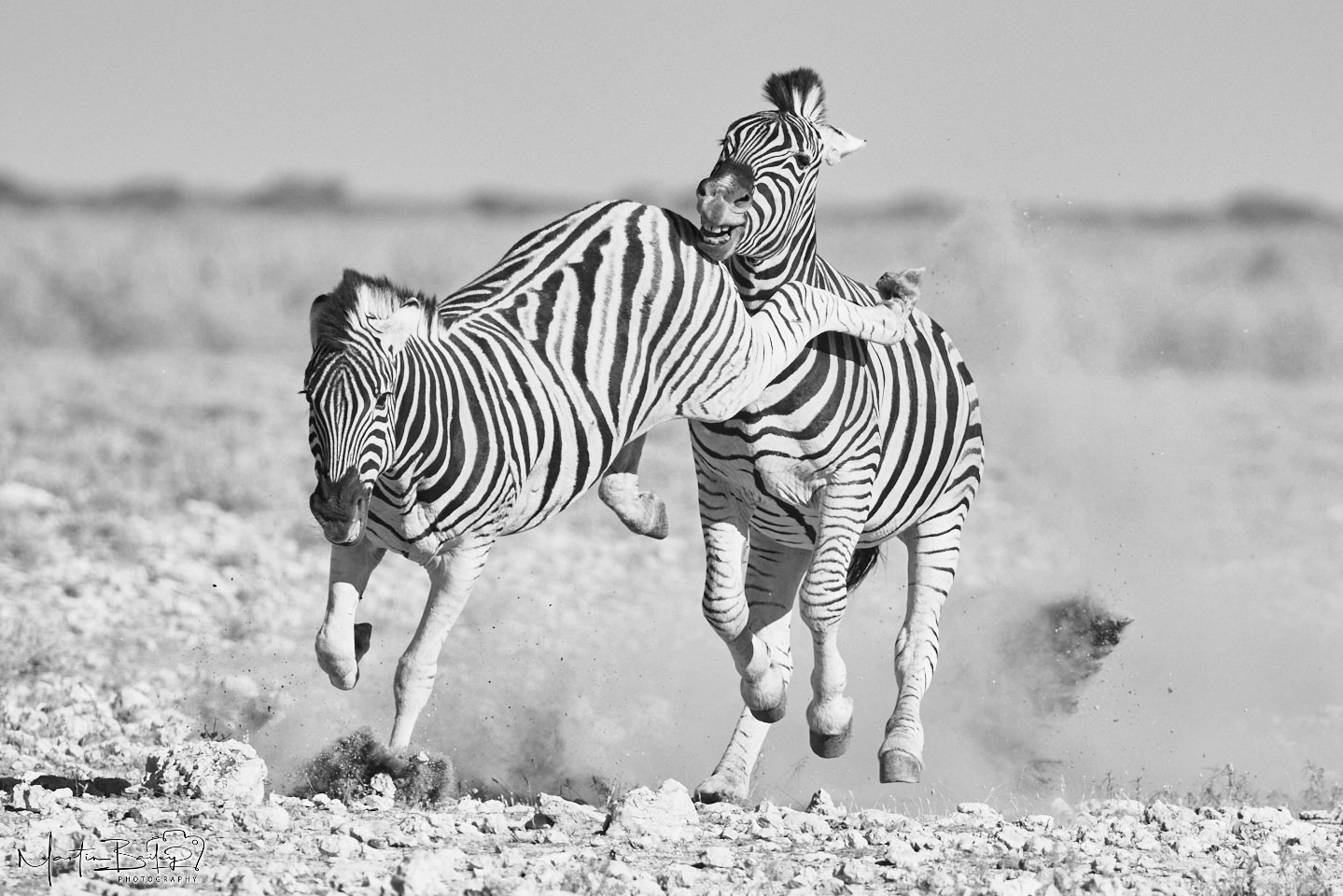
To get these shots, with both zebras sharp, I was shooting at ƒ/11 with my ISO set to 1600, which enabled me to get a fast shutter speed of 1/2500 of a second, which was necessary to freeze the action, and the dust kicked up by the zebra. I was shooting with Canon’s new RF 200-800 mm lens and had zoomed in to 742 mm for this shot.
The little guy in this next image is an antelope called a Dik Dik, caught here looking uncharacteristically curious. They are usually so timid that the moment they see you, usually well before you stop your vehicle and raise your cameras, they run into the bushes. You’ve got to love those big brown eyes, although I can’t say I’m a massive fan of their rodent-like noses.
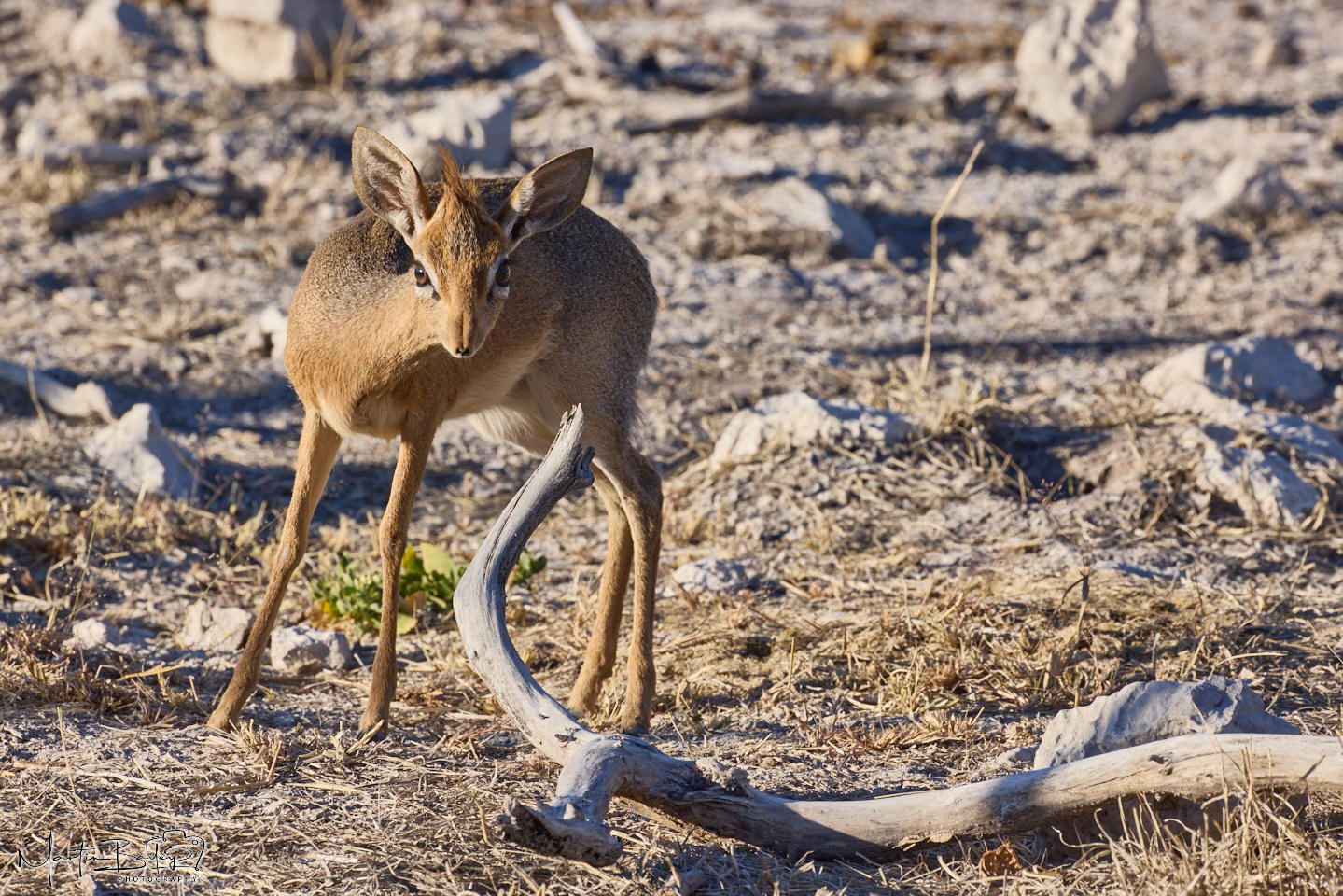
Another thing we enjoyed and possibly spent too much time doing on this trip was waiting for a Lilac-Breasted Roller to take flight. This does take patience, as often they’ll fly away as you park your car. The ones that stick around can sometimes test your patience and shoulder strength by sitting it out longer than most people can hold up a long lens.
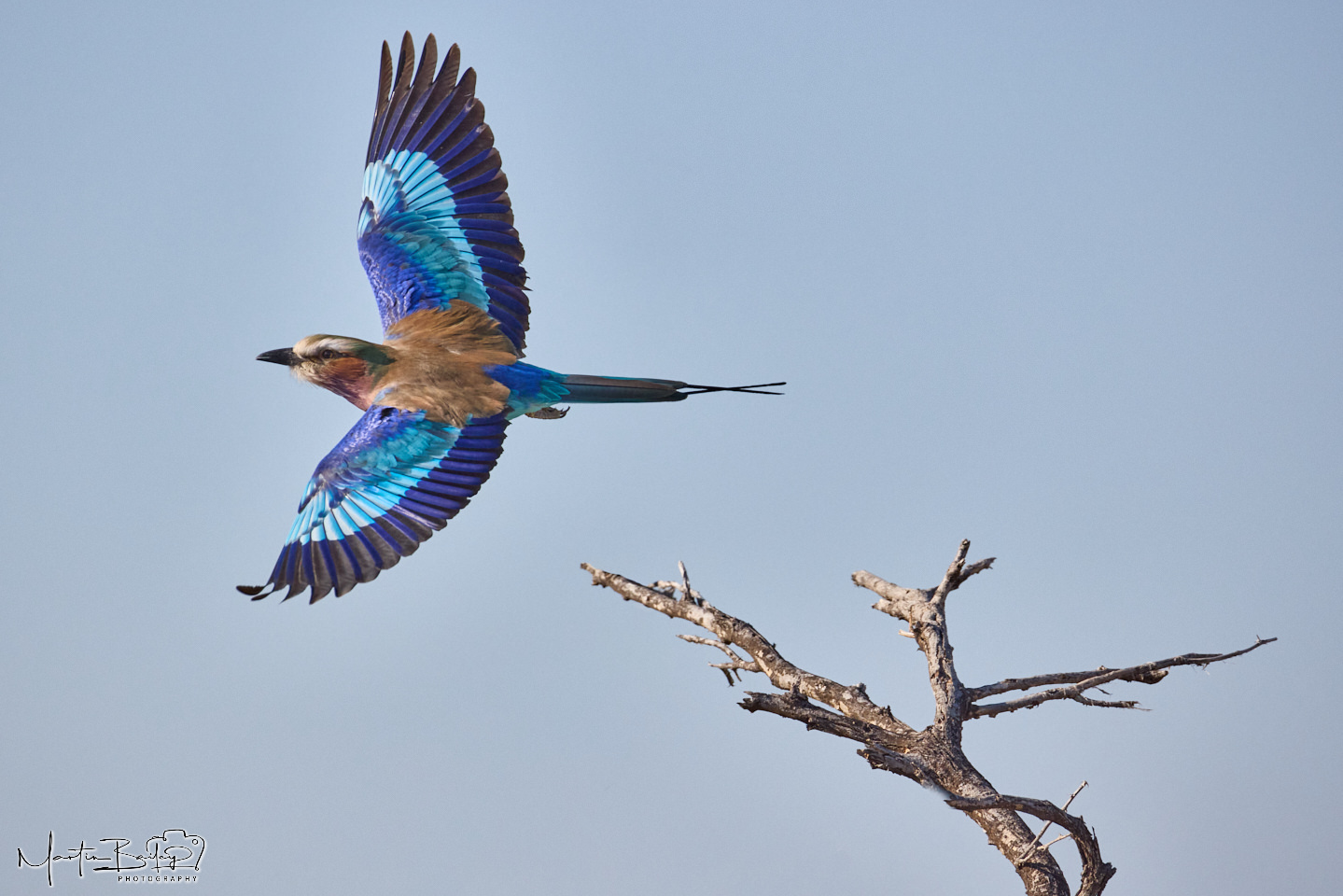
They are beautiful birds, though, and probably one of just a handful of small birds I am interested in photographing. I used a 1/4000 of a second shutter speed to keep it sharp as it took flight, and was happy to get the colorful wings spread like this.
Next, we came across two brother Cheetahs sleeping under a tree and spent some time photographing them in the morning. However, they probably had full stomachs and were mostly sleeping, so they were not very photogenic. We decided to leave them for a while and go to lunch. After lunch, when we went back, they’d moved slightly and were still relatively lethargic, but at one point, I managed to get this shot, which I was happy with.
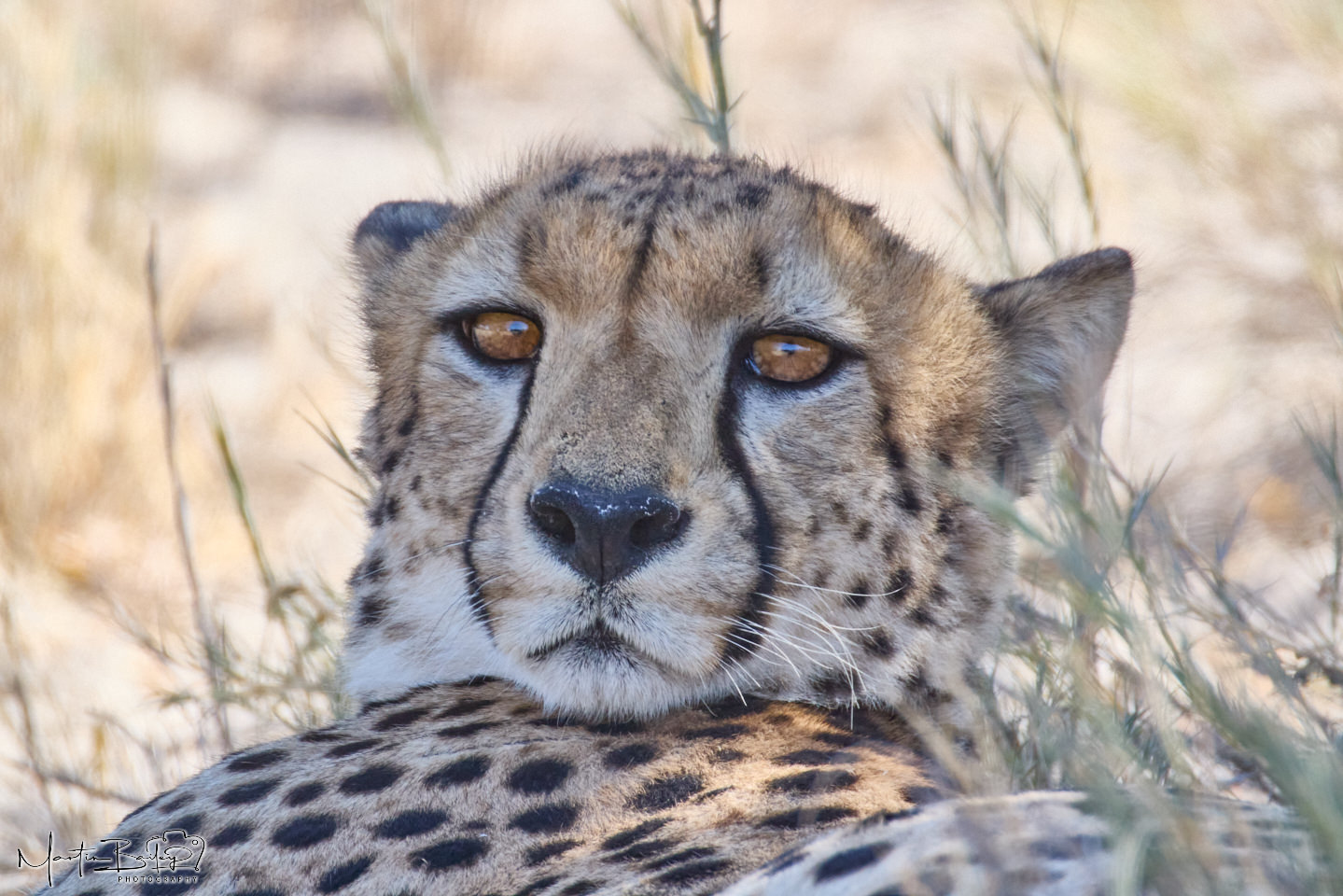
As I mentioned during my review of the RF 200-800mm lens, I shot this image with the 2X Extender fitted, zooming in to the max, for a focal length of 1600 mm. I know that some people pan Extenders, but in the right hands, there is no reason to abandon the idea of using even the most unforgiving 2X Extender when you can get image quality like this.
Next, is a shot of a Greater Kudu, which I shot in portrait mode, because he was so close, I thought it more appropriate. I was zoomed in to 800mm without an Extender, so we weren’t that close, but this felt more like a portrait than a documentary shot of the entire animal. They are so majestic, and he seemed so proud as the wind caught the hair on his neck, and he turned his head towards the camera almost as though I was posing him.
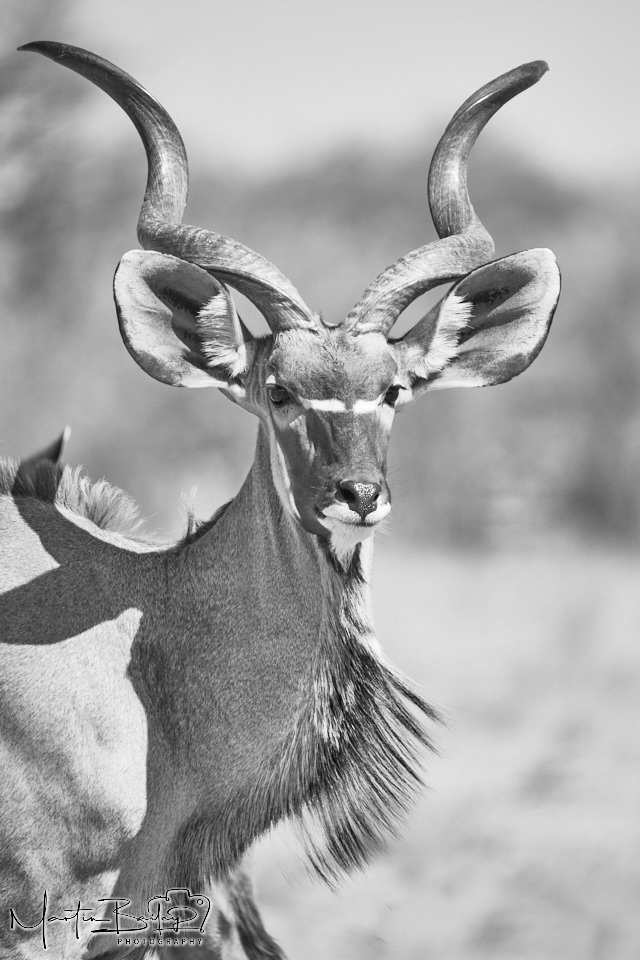
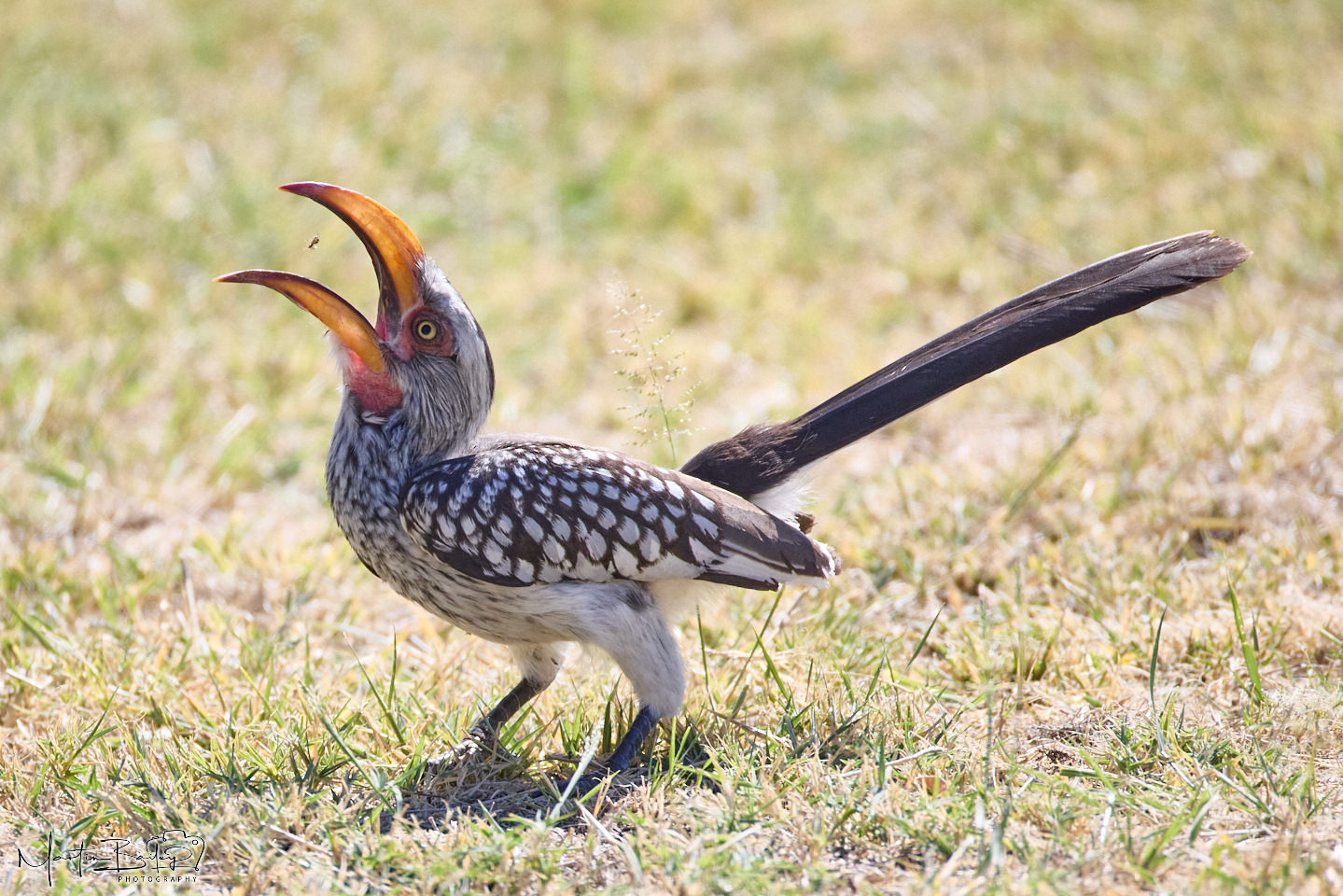
After a restroom stop, on our way out of the nearby Namutoni Camp, we noticed a hornbill, or flying banana, picking up ants from the glass and flicking them into that big banana bill. I’ve never really photographed the hornbill, but this behavior felt like a good opportunity and reason to raise the camera.
Finally, we have three elephant photos to look at. This was a fantastic shoot that I won’t forget in a hurry. There was a group of probably forty elephants at the waterhole and three or four smaller groups waiting around the edges of the clearing surrounding the waterhole. There was an obvious pecking order, or simply a respect for the group already there, and when they left, another group went to the waterhole, and the rest stayed where they were, and continued waiting.
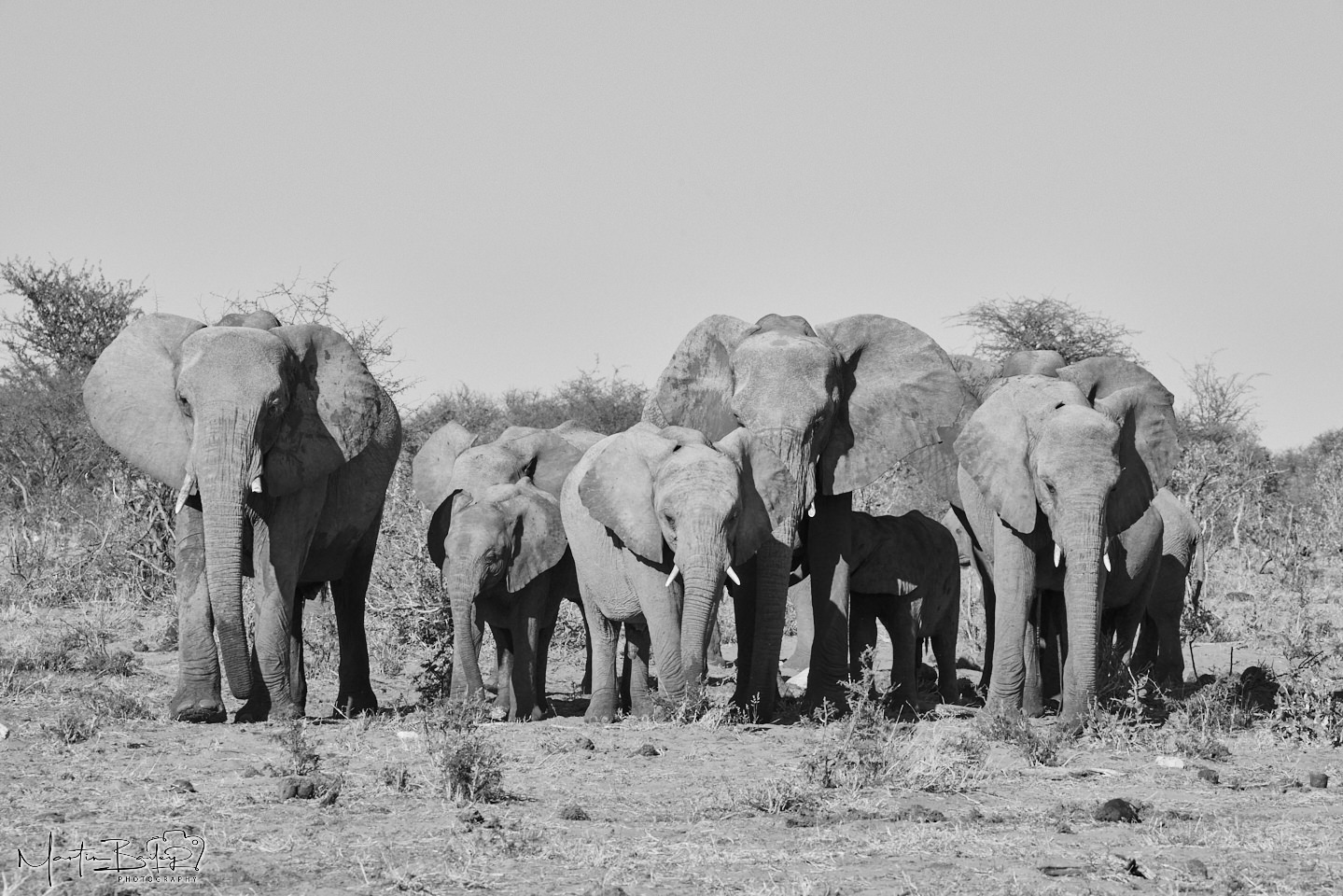
Despite the respect shown among the groups, I was somewhat disappointed by the way the groups treated this elderly mother with a teenage child. They stood waiting until all of the larger groups had visited the waterhole, but when around half of the last group had moved on, they approached the waterhole while there was still half a group there and were promptly driven away.
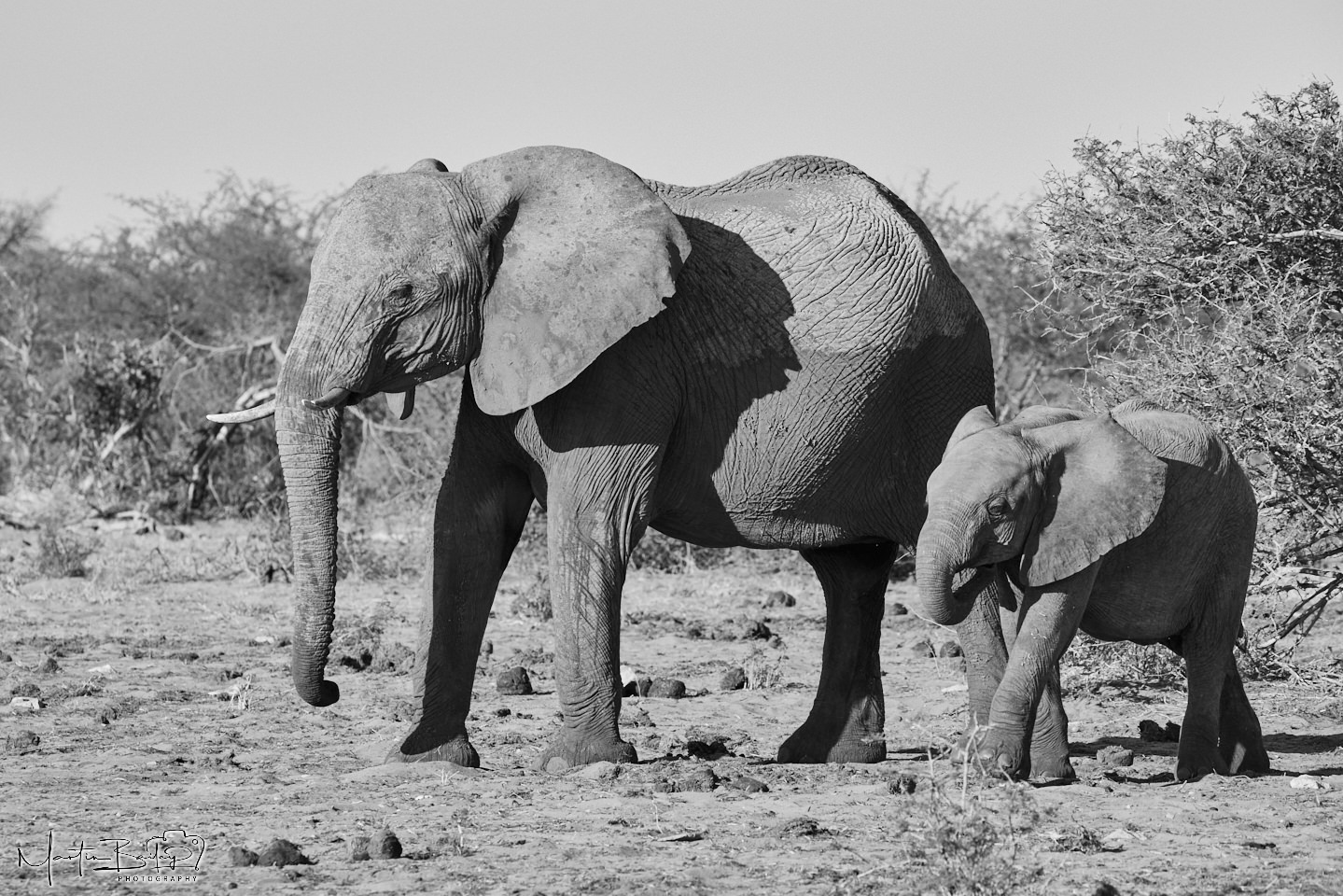
There was room for them at the waterhole, but maybe they were treated that way because they broke the protocol. I couldn’t help but wonder why these two elephants were all alone. The mother was older than most mothers with teenage children, and I wondered if that had been a problem in elephant society. Maybe they frown upon elderly females with children rather than going into nanny mode, helping the younger mothers with their children instead. It’s pure speculation, of course, but it didn’t feel like this was just about the waiting protocol. They both just looked so sad, and it was saddening to watch.
We left that waterhole and swung by one last location before leaving. As we arrived, there were no animals at the waterhole, but just as we were thinking of turning the car around to drive away, a small group of elephants came out of the bushes, led by one of the younger members of their group. The light was beautiful, with long shadows, but the warmth of the light made everything look the same, so I continued to process these images in black and white.
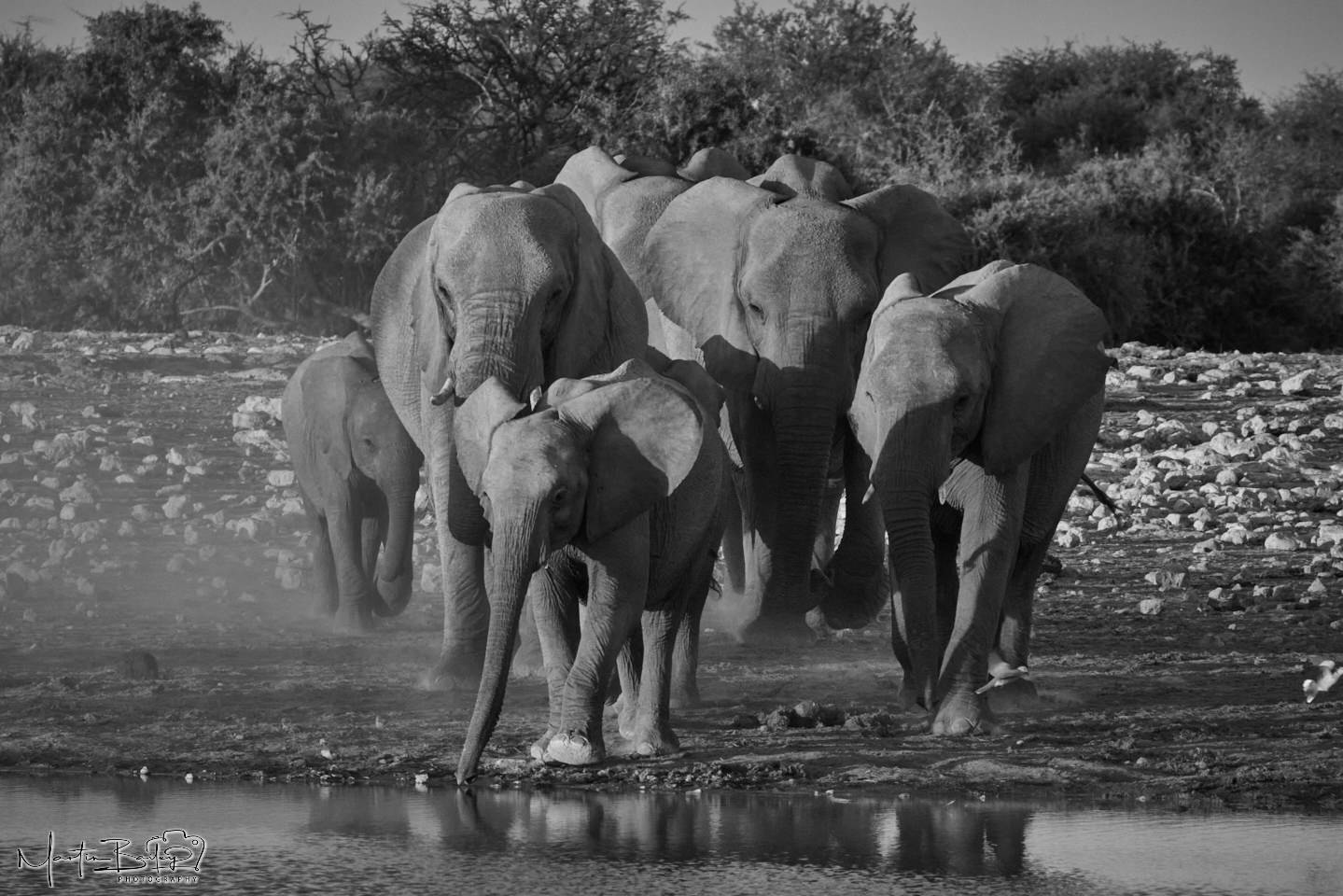
I’m not running the Namibia tour next year or in the foreseeable future, although I may start again, as I genuinely love the country, so it saddened me to think that this would be my last shot, at least for a while. As a good friend said when I first went to Namibia, once you get that red dust in your blood, it will always draw you back, and I know he is right.
So, we’ll wrap it up there, and I’ll be back again soon to share some of the cool stuff I’ve done in my new studio, which I’ve built in our new home. It also feels like a good time to update my Namibia portfolio, so I’ll post that soon, too.
Show Notes
Subscribe in iTunes to get Podcasts delivered automatically to your computer.
Download this Podcast as an MP3 with Chapters.
Visit this page for help on how to view the images in MP3 files.


The Roller image justifies the wait Martin and the Cheetah is a classic. The easily recognisable Etosha landscape is so different from the east African game areas, making for some interesting images. This all brings back memories dating back to slide days.
Aah, thanks Bruce!